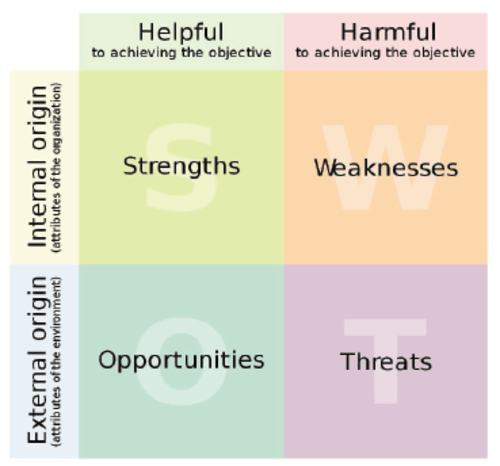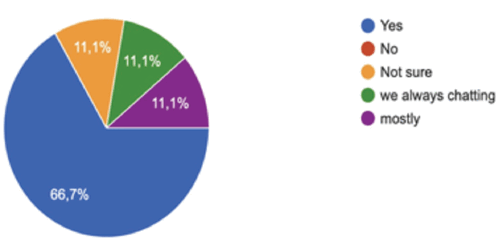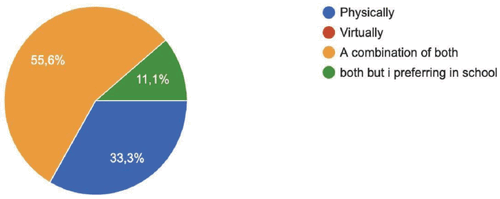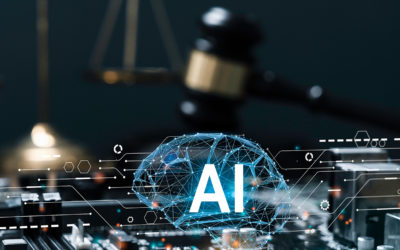This work aims to study the potential role of Artificial Intelligence in customized learning. The rationale behind this particular topic relies on two factors. First of all, the need to highlight the importance of the educational ecosystem in Qatar as it considers all levels of education starting from kindergarten to university and higher studies. Education in Qatar has achieved significant advancement in various areas after adopting independent school systems with international practices and allowing students to join top-ranked universities worldwide. Secondly, the need to find a way to combine Artificial Intelligence (AI) with education to explore the potential of AI in adaptive learning in Qatar. The results show that the utilization of AI in adaptive learning seems to be promising in advancing the quality of education in an unstable instruction setting, such as the experience of the COVID-19 pandemic and the prospect of implementing a versatile education.
1. Introduction
While in the past few decades, global and local efforts were dedicated to raising quantity education through increasing access to education, the aspect of investing in quality education has become more relevant to answer the requirements of the fourth industrial revolution. “Education, like other types of human capital investment, may contribute to economic growth and boost the incomes of the poor in the same way that investment in physical capital, such as transportation, communications, power, or irrigation, does.” 1
As a disruptive tool, online learning technologies have succeeded to some extent in ensuring the continuity of education in schools. While the necessity for remote learning rises with closure for longer periods of time (e.g., in the case of a pandemic) since more face-to-face training is lost, maintaining student interest over time becomes increasingly challenging when there is “no face-to-face component to instruction.” However, they emphasize that online learning methods have resulted in the emergence of new challenges.
The purpose of this work is to investigate the possibility of including artificial intelligence as a technique in Qatar’s educational system for two reasons. The first is to step forward with education and make it richer and updated. The second reason is to make it fit in the time being especially after the Covid-19. This research explores and identifies the existing types of education such as traditional, classical, customized, adaptive, E-learning, and disruptive education. Thus, this investigation is an attempt to identify, describe and analyze challenges and risks facing education during the recent COVID-19 pandemic. It is also going to determine the factors explaining the necessity to adopt adaptive learning rather than the E-learning system. Moreover, this work shall examine the level and parameters of efficiency of online learning during the COVID-19 pandemic as well as the potential that AI-enabled adaptive learning could achieve a good quality of education in a disruptive context in Qatar. On the other hand, given the current debates regarding the biases of AI, this paper explores the potential risks that could encounter adaptive learning when it comes to AI. To this end, several aspects shall be addressed in this work including major challenges that may influence online education during and after COVID-19, the disadvantages and challenges that faced online learning during pandemic learning, the competitive strategies and mechanisms that could be used to integrate adaptive learning and AI, and the kind of relationship between student performing, teachers and the educational system.
1.1. Artificial Intelligence (AI)
Artificial Intelligence is “a new technology that has begun to alter educational tools and institutions”. 2 The author adds that “AI mostly employs sophisticated analytics, deep and machine learning to track the pace of a certain individual among others.” 2
Young people nowadays spend a lot of time on their cell phones or tablets. Individuals can use AI applications to study for ten to fifteen minutes in their leisure time. AI supports us in assessing the mood or ease of students during lectures by using Gesture Recognition Technology. As AI advances, the computer, for example, analyzes the student’s facial expressions or motions and uses these to identify if the student is failing to understand the lecture and modifies the course so that the student can easily follow along. 2
AI helps in the identification of gaps in teaching and learning and improves educational competency. AI can increase efficiency, personalization, and streamline administrative processes, giving instructors more time and flexibility to give understanding and adaptation, which are distinctively human characteristics that robots lack. It is feasible to elicit the greatest outcomes from pupils by combining robots and professors.
To begin, artificial intelligence (AI) is a discipline of computer science that tries to generate machine intelligence. Second, the term “artificial” refers to items that are created or manufactured by humans rather than happening naturally. Third, intelligence is the capacity to devise strategies for achieving goals by engaging with an information-rich environment. It is most commonly linked with computer science, although it has several essential connections with other subjects such as mathematics, physics, biology, and philosophy. 2
1.2. Disruptive Education
In education, disruption is defined as “a break or stoppage in a normalized process.” For example, a teacher who has been utilizing direct teaching for years may introduce a disruptive innovation by adding project-based learning and interactive online quests to interest pupils.” 3 “Qatar’s leadership is heavily involved in its K-12 education reform, “Education for a New Era,” since education is viewed as the key to the nation’s economic and social success.” 4 The answer provided to achieve this goal is found in invention with fresh techniques, methods, and forms. Artificial intelligence and gamification have grown in popularity in the classroom as effective methods of getting students to study by using game design elements in non-game contexts, teacher tubers, Massive Open Online Courses (MOOCs), lifelong learning, business e-learning, and all the other possibilities that educational technology offers. 5
1.3. Digital Learning during the COVID-19 Pandemic
“Creating an innovation structure in the workplace and vocational digital learning ensure social distancing. The pandemic has influenced learning, Vocational Education and Training (VET), and workplace learning in companies”. 6 E-learning supports learners to be more activated and motivated. Moreover, E-learning from the writer’s view supports long-life learning and allows people to gain new skills and knowledge to adapt to the changing job market. Added to that, digital systems may create opportunities for stronger collaborations. Thus, many people with special needs benefit from digital systems because it offers them the flexibility to adapt learning programs to meet their specific needs. That is why disruptive education might change the way the world learns because it approaches learning differently and in a revolutionary way that disrupts traditional systems. 6 “E-learning or online learning has been much an adoption of digital learning, but has not proved to be very disruptive” (p.3). By using disruptive ways of teaching, it is possible to guarantee improvement in the educational outcomes. 7 The COVID-19 is the best example to give when it comes to disruption in educational systems in history affecting a tremendous number of students from different countries. As a response, many efforts have been cooperated to make a change no matter small or huge. 7
Not only teachers should work more on their teaching skills in order to involve all types of learners in their learning plan, but also educational institutions and governments have to be held responsible when giving decisions related to e-learning. In other words, every detail in education has to be taken seriously to produce a better quality of information-sharing to students.
1.4. Barriers and challenges of online education during and after COVID-19 Pandemic
As the pandemic continued, the collapse in all countries’ economic and social sectors began, especially the education segment. Due to the rapid spread of the virus and the worsening of the situation, governments around the world failed to put the pandemic under control. Therefore, many governments decided to switch to virtual learning to help control the spread of the disease. As a result, for the transition from physical to online attendance, teachers, students, and administrative staff had found themselves in need to quickly adapt to the basics and the mechanisms for virtual learning and teaching.
However, the process of online teaching presented many challenges in terms of methodology and pedagogy. Online learning or E-learning was completely faithful to the traditional system of education. The only difference was the distance between teachers and their students. However, online learning was the best option and solution regardless of its disadvantages and its difficulties. This means that technology could present an immense potential to solve the current issues of online education and serve the realization of quality in education.
1.5. The role of disruptive learning in enhancing the quality of education
After examining various related literature, it is possible to summarize the following: Adaptive education is not new in terms of concept and adoption; it has provided meaningful results to provide an effective and stimulating environment for the work and improve the quality of education. Added to that, disruptive education is defined by the usage of emerging technologies such as AI and augmented reality in order to increase the efficiency of education. Therefore, the aspect of using the current online learning system as a baseline for disruptive education has a greater potential. This infers that those courses that are based on the use of Information and Communication Technology (ICT) shall be developed such that an appropriate ICT approach and course online instructions are more compelling and result orientated.
1.5.1. The potential of AI-enabled adaptive learning
Technology generally makes learning better, more relevant, and believable. For example, access to the Internet can make abstract subjects look real for children while stretching their research skills. Adaptive education is a new and revolutionary educational system that contradicts the old concept and the central principle of the curriculum. However, the adoption of the type of modern educational curriculum is still extremely limited. The type of results differs from one country to another depending on the population, diversity, and the country’s financial abilities. In addition, this type of learning must consider the potential risks that may interfere with economic development in particular.
2. Methodology
This study used a qualitative technique to gather and analyze data using interviews and survey questionnaires. Interviews were done to collect material from various perspectives thorough answers to the interview questions. Furthermore, this strategy was utilized to improve the quality of replies and to give requested information on the research issue. The interviews were performed with individuals from a local institute for higher education to better understand their perspectives, behaviors, and experiences with the research topic, particularly to offer thorough replies on the quality of education and how to incorporate AI into the curriculum. The interview questions were distributed to participants in person which made it possible to ask further questions when needed.
2.1. Methods
2.1.1. Qualitative method
“Quantitative research methods attempt to maximize objectivity, replicability, and generalizability of findings.” 8 Indeed, quantitative research generates statistics through the use of large-scale survey research, using methods such as questionnaire.” 9 The interview is a very suitable quantitative method to collect data about the discussed matter.
Qualitative research explores people’s behavior, attitude, and experiences through methods like the interview which “attempts to get an in-depth opinion from participants”. 9
2.1.2. Quantitative method
This research has implemented a quantitative research method; the survey. It consisted of closedended, open-ended questions, and yes or no questions. Closed-ended questions which can be quantifiable were used because they are easy and quick to be recorded and coded [9]. Multiple choice questions, for instance, help the researchers “to hold some control over the responses given” and provide more flexibility and accuracy for the respondents [10]. The quantitative method deals with statistics and numbers too.
The survey targets students of an international primary school in Qatar. The survey aims to analyze the students’ opinions about online learning with a focus on their feelings, desires, and relationships with their teachers.
Table 1.
Survey Design
| Target | Number of participants | Setting | method |
| Students | 9 | Primary school | Online Google Forms |
3. SWOT Analysis
This theory of research fits best with this study because observation is the key to knowing what is happening in the class and reflecting on the relationship between teachers and students. It is also the best way to find out about the strengths, weaknesses, opportunities, and threats of the matter researched. “SWOT (strengths, weaknesses, opportunities, and threats) analysis is a framework used to evaluate a company’s competitive position and develop strategic planning. SWOT analysis assesses internal and external factors, as well as current and future potential. A SWOT analysis is designed to facilitate a realistic, fact-based, data-driven look at the strengths and weaknesses of an organization, initiatives, or within its industry. The organization needs to keep the analysis accurate by avoiding preconceived beliefs or gray areas, and instead, focusing on real-life contexts. Companies should use it as a guide and not, necessarily, as a prescription.” 11
To be updated with the new technologies, the first part shall discuss the analyses of the valid points related to strengths and opportunities. However, the second part shall focus on the harmful points related to weaknesses and threats.
The strengths and the weaknesses are internal factors, but the opportunities and the threats are external factors within the school.
Figure 1.
SWOT analysis in a 2×2 matrix [12]

Table 2.
SWOT analysis design
| Strengths | Weaknesses | Opportunities | Threats |
| Qatar’s reputation in education | Policies | Usage of the most advanced technology infrastructure | The risks and the new challenges associated with emerging technologies |
As table 2 shows, the strength of this study is about Qatar’s good reputation in education. The weakness is mainly about the policies taken which do not seem as effective as expected. The access to using the most effective technology is being manifested which highlights the third point of this theory; opportunities. Lastly, what threats here are the risks and the new challenges coming with the sudden urge of technologies.
4. Results and Discussions
4.1. Interview Results
4.1.1. Teachers and Administrative Staff Qualifications
After spending three months in the process of observation research, it was noticed that teachers have a varied range of international experiences. They are super motivated and most of them possess at least the minimum level of skills in using technology in teaching. This means that they are notably up to date with the new technologies as they are trying to utilize them in their courses and lessons to ensure students’ satisfaction. Moreover, it has been noticed that they have great relationships with each other. Teachers are flexible, sociable, proficient, and hardworking. Moreover, they possess several soft skills such as critical thinking, active listening, creative problem solving, and effective communication. Interestingly, the teachers are dedicated to supporting those children with special educational needs. The administrative staff team is disciplined, responsible, and respectful. Thus, there are good teamwork and strong leadership skills.
4.1.2. Interview with the administrative staff: education level before and during the pandemic and the challenges
The interview with the administrative staff was structured to be conducted face to face and included open-ended questions. The interview focused on the administrative opinion in developing the quality of education before and during the pandemic. The administrative staff was asked about the impact of technology on learning and if E-learning influenced the quality of education.
The answers of the administrative staff were precise and concise. They answered all the questions. They were very knowledgeable, expressive, and interactive. The first question was about educational progress and if it was able to overcome the curriculum’s challenges. The answer was no.
One of the questions was about customized learning and their opinion about that curriculum. They confirmed that “Tailored education is simply making education much more individualized for the students and their needs.” The participants did not seem to be convinced about the customization because it takes much time. The last question was about the policies and their recommendations for the policymakers.
Generally, there were several concerns that using technology would not be suitable for children’s health and relationships. Hence; the harmful side of technology, especially addiction and isolation, has been highlighted.
4.1.3. Interviews with teachers: E-learning experiences
Interviews with teachers were face to face and structured. The interview targets teachers’ points of view about the developments in the education segment, the preparation to be updated with e-learning, the role of parents in the learning progress during the pandemic, the level of student’s knowledge after and during the pandemic, the efficiency of E-learning during the pandemic and their opinions about the need to a disruptive or customized learning to improve the quality of educations. The answers varied considerably. Some teachers believed that there is a dynamic change in the progress of education during the past 25 years, but others thought that this change was not enough to improve the quality of education. It was noticed from their tones that they were extremely motivated and excited about their experiences with E-learning during the pandemic.
Some teachers, however, were already updated and knew how to use online platforms, but others faced some difficulties at the beginning. Those who faced difficulties said that they received support. That means that the communication during the pandemic was not affected by the distance. Nevertheless, some teachers became closer to their students. This means that technology helps to make emotional and strong bonds better than physical ones. For example, learners will feel more at ease to ask about things they do not get in the lesson online more than asking when being physically in class. This might be because when they are behind a screen, they feel less shy and push themselves to participate in the course. This results in making the relationship stronger and might pave the way to strengthen the bond between teachers and students later on when meeting in class. They also declared that the level of student knowledge and understanding had improved during the pandemic thanks to E-learning. E-learning was extremely beneficial to build the character of children. They learned how to be independent and responsible. Added to that, during the pandemic, parents became more flexible and updated because they almost took the teacher role. Thus, parents become more aware of the teachers’ efforts.
From those answers and feedback, it was noticed that teachers were proficient and responsible. They knew what they were doing. They were asked about their opinions regarding solving education issues. The get-along kind of relation between them may make the progress of education more accessible.
Last but not least, they were asked about their opinions about customized learning. Teachers and scientists insist on the benefits and the advantages of customized learning and how it could affect the performance and the quality of education. They think that it is important to make a centered curriculum. They see that it is essential to give the children the needed space to express themselves, the ability to choose, and the freedom to speak up. They think that the more the curriculum is centered, the more the child will be creative. Finally, they were questioned about their recommendations for the policymakers. The scientist said that it is because of “the design of the systems”. There are many problems with design so, in technology, if risks are taken into consideration, problems like data management of the data collection and the bias risk and then the design will be noticed because the design might create stress and frustration. To sum up, teachers were extremely motivated and satisfied with the experience and they favored using technology in the future. Using technology may help them to understand their students’ abilities, voices, and needs. Using data and AI helps them to better manage their time in planning and preparation.
4.1.4. Interviews with parents: E-learning experiences and customized learning
The interviews with parents have been done online. They were semi-structured. The interviews aimed to know the parents’ points of view, their expectations, their experience in the pandemic, their opinions about using technologies, and if they were in favor of adaptive learning. They gave an overview of the topic. There was no touchable change especially in the curriculum of education. One of the parents noted that the same standardized tests prevail and hence; the education methods are assumed that they still the same. Moreover, parents seemed unsatisfied, worried about the future, and unconvinced with the few changes. Their experience during the pandemic was questioned and then how it affected their kids’ educational level. Some of them were satisfied with the E-learning and others were not. A parent declared that technology was instrumental and she said that “technology now is a part of instruction and teaching strategies”. Others were distracted between work and children. Some had difficulty in coping with new technologies. Parents had the most challenging time in the pandemic; they found themselves doing three jobs together.
However, in other ways, the difficulties did not affect their children’s performance. They admitted that the level of education was the same before and after the pandemic. The decision to learn English was sudden. So, there were no official preparations or training for that. They said that teachers did their best and children’s performance was not affected negatively. Most importantly, they were asked about their opinions about customized learning. The parent was supportive of the customized learning. They said that “students’ voices should come first.” The parent had previous studies about this education system. She knew about the USA experience, and she seemed very excited and motivated about this question.
To conclude, parents experienced E-learning, so they knew better about the significance of technology in this era. It was beneficial for them to know the teachers’ efforts and their kids’ thoughts and difficulties and recognized that customized learning would be a great solution to their problems.
5. Student-Teacher Relationship
5.1. Students’ feelings and teachers’ understanding
More than 80% of the students confirmed that their teachers understand their feelings and thoughts. The ability of the teachers to understand their students’ thoughts, desires, and fears directly influences the quality of education. The more the teachers know about their students’ difficulties, the more enhancement and improvement are attained by the students. In that way, the teachers shall work on their students’ weaknesses so their performance will improve, especially with the new technology; this process will be more straightforward.
Figure 2.
Understanding between teachers and students. The question was if the students believe that their teachers understand their thoughts and feelings.

When asked if the students think that they are understood by their teachers, the majority, (66.7%) agreed that there was a mutual understanding. The rest were between not agreeing to the fact that they were understood by their tutors and just sometimes chatting. This explains that teachers were aware of maintaining a good relationship with the students because it affected the way they study.
5.2. Physical vs. virtual class attendance
When asked about the preferred type of attendance (physically or virtually), almost half of the participants (55.6%) preferred a combination of both. 33.3% preferred to attend physically and 11.1% liked both but preferred being more physically at school. This shows that education systems might be better taught based on the duality of these two types to make students feel more comfortable in their studying environment.
Figure 3.
Preference of physical vs. virtual attendance. The question was if the students prefer to attend physically or virtually.

6. Conclusion and Limitations
In conclusion, this research addressed and fulfilled the research aims and objectives, supported the research hypothesis, and answered the research questions. This research paper examined the main challenges, the significance of the E-learning experience during the pandemic in Qatar, and potential goals to reach adaptive learning. It also focused on the relationship between students and teachers and how this relationship influences their learning process.
The added value of this research is that it gives importance to maintaining a good relationship with learners and encourages adapting a disruptive way of learning especially after the continuous waves of Covid-19. It also examined the level and parameters of efficiency of online learning during the pandemic as well as the way AI-enabled adaptive learning could bring to achieve a good quality of education in a disruptive context in Qatar.
However, this research has several limitations. Larger sample size would be more beneficial to improve the research’s dependability. Since the interviewees’ number of the study was limited (6), thus the future studies can conduct more interviews with other teachers, parents, and administrative staff from other schools. The number of the students who filled the survey was quite limited. Some administrative staff refused to do the interviews because they were concerned about the sanitary protocol.
Nevertheless, our results have opened up some areas of discussion about the potential and challenges of disruptive education; issues of quality, risk, pedagogy or the role of teachers are all avenues for further exploration.
Competing interests
The authors declare that they have no conflict of interest.
References
- Psacharopoulos GE, Woodhall MA. Education for development: An analysis of investment choices (Washington, DC: World Bank). 985. [E-book]. Public Disclosure Authorized. [Google Scholar]
- Kengam J. Artificial Intelligence IN Education. Research Gate. 2020, December. DOI: 10.13140/RG.2.2.16375.65445 [Google Scholar]
- Washington B. Disruptive Innovation in Education. Teach HUB. 2021, October 1. https://www.teachhub.com/classroommanagement/2019/11/disruptive-innovation-in-education/ [Google Scholar]
- Zellman GL., Karam R. & Constant L. Implementation of the K-12 Education Reform in Qatar’s Schools. Monograph. RAND Corporation. PO Box 2138, Santa Monica, CA 90407-2138; 2009. Researchgate. https://www.researchgate.net/publication/234748341_Implementation_of_the_K-12_Education_Reform_in_Qatar’s_Schools_Monograph [Google Scholar]
- Iberdrola Disruptive education for meeting the challenges of the future. 2015. https://www.iberdrola.com/talent/disruptiveeducation
- Humburg I. Creating Innovative Structures in Workplace and Vocational Digital Learning to Ensure Social Distancing. The Fourteenth International Conference on Digital Society. 2020a 2020 (pp. 124-127). https://www.iat.eu/aktuell/veroeff/2020/hamburg06.pdf [Google Scholar]
- Christensen CM. Disruptive innovation: can health care learn from other industries? A conversation with Clayton M. Christensen. Interview by Mark D. Smith. Health affairs (Project Hope). 2007 Mar 13; 26:(3):w288-95.https://doi.org/10.1377/hlthaff.26.3.w288 [Google Scholar]
- Harwell MR. Research design: Qualitative, quantitative, and mixed methods: Pursuing ideas as the keystone of exemplary inquir. InThe Sage handbook for research in education: Pursuing ideas as the keystone of exemplary inquir 2011. Sage. https://doi.org/10.4135/9781483351377.n11 [Google Scholar]
- Dawson C. Practical research methods: A user-friendly guide to mastering research. How to books; 2002. [Google Scholar]
- Birmingham P, Wilkinson D. Using Research Instruments: A Guide for Researchers. Routledge: Birmingham. 2003. [Google Scholar]
- Kenton W. How SWOT (Strength, Weakness, Opportunity, and Threat) Analysis Works. Investopedia. 2021 March 29. https://www.investopedia.com/terms/s/swot.asp [Google Scholar]
- Kumar PS. Marketing strategies for the university libraries in Kerala. DESIDOC Journal of Library & Information Technology. 2013 Sep 1; 33:(5). https://doi.org/10.14429/djlit.33.5105 [Google Scholar]
© 2022 The Author(s), licensee HBKU Press.
By Alexandre Dormeier Freire and Marwen Hjiri (DPP’21)
Read the article on qscience.com









Hi Alexandre,
The ability of AI to personalize learning and improve efficiencies demonstrates its immense value in transforming the educational landscape for both educators and learners alike. AI’s transformative influence on education enables us to tap into the vast possibilities of intelligent machines. By embracing AI-driven solutions, we can unlock new avenues for effective teaching and learning that pave the way for a future where education is more accessible and engaging for all.